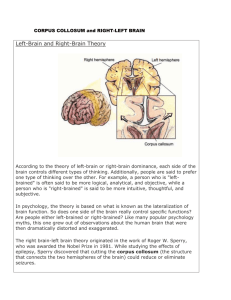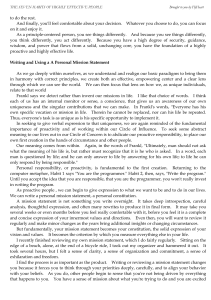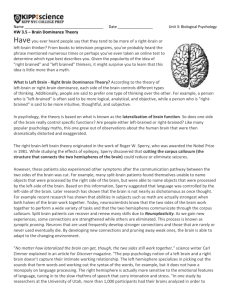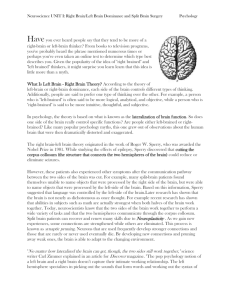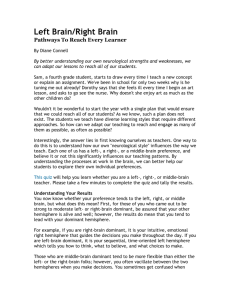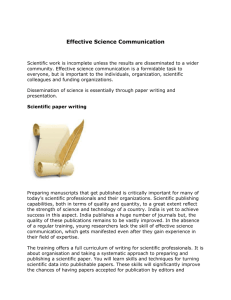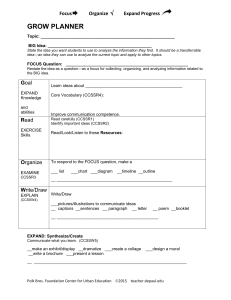Student Note: Left and Right Brain Thinking Styles
advertisement
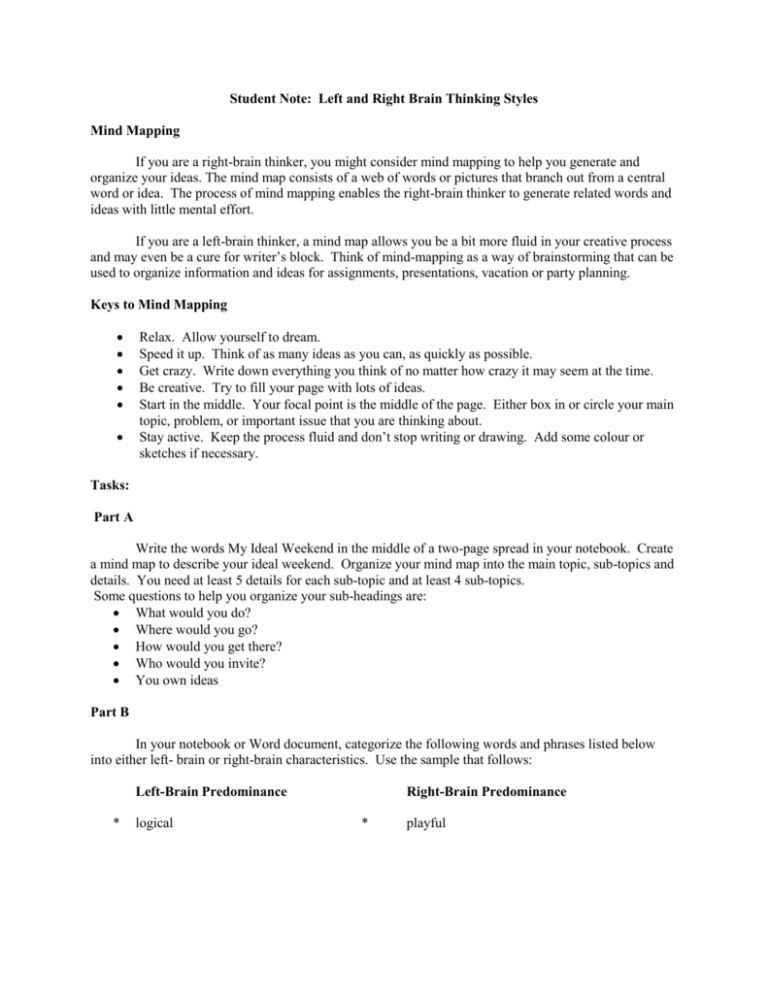
Student Note: Left and Right Brain Thinking Styles Mind Mapping If you are a right-brain thinker, you might consider mind mapping to help you generate and organize your ideas. The mind map consists of a web of words or pictures that branch out from a central word or idea. The process of mind mapping enables the right-brain thinker to generate related words and ideas with little mental effort. If you are a left-brain thinker, a mind map allows you be a bit more fluid in your creative process and may even be a cure for writer’s block. Think of mind-mapping as a way of brainstorming that can be used to organize information and ideas for assignments, presentations, vacation or party planning. Keys to Mind Mapping Relax. Allow yourself to dream. Speed it up. Think of as many ideas as you can, as quickly as possible. Get crazy. Write down everything you think of no matter how crazy it may seem at the time. Be creative. Try to fill your page with lots of ideas. Start in the middle. Your focal point is the middle of the page. Either box in or circle your main topic, problem, or important issue that you are thinking about. Stay active. Keep the process fluid and don’t stop writing or drawing. Add some colour or sketches if necessary. Tasks: Part A Write the words My Ideal Weekend in the middle of a two-page spread in your notebook. Create a mind map to describe your ideal weekend. Organize your mind map into the main topic, sub-topics and details. You need at least 5 details for each sub-topic and at least 4 sub-topics. Some questions to help you organize your sub-headings are: What would you do? Where would you go? How would you get there? Who would you invite? You own ideas Part B In your notebook or Word document, categorize the following words and phrases listed below into either left- brain or right-brain characteristics. Use the sample that follows: Left-Brain Predominance * logical Right-Brain Predominance * playful List of Left and Right-Brain Characteristics curious Intuitive spatial ability uncomfortable with change rules, systems rational conforming linear, sequential Language, math, law playful logical erratic “common-sense” approach serious flexible thinks in pictures thinks in words and numbers facts fantasy impulisive illogical book learning holistic imaginative knowledgeable art, music, dance, mime theatre

